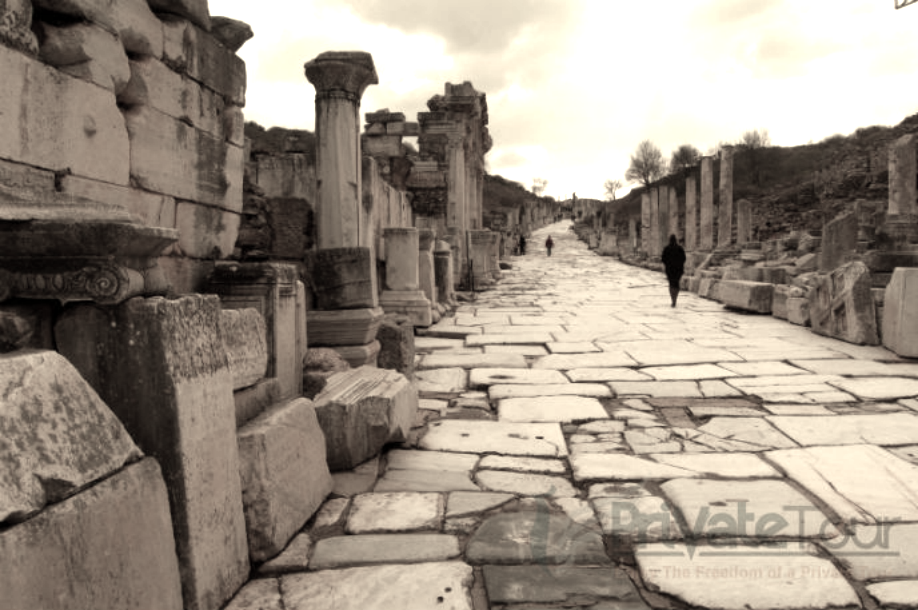The part of the Sacred road running between the Library of Celsus and the Ephesus Theater is called the Marble Street. The Marble street was paved with large blocks of marble and had herring bone slopes.
On the Mount Pion side it had a portico higher than the street level. The other side was turned into a Doric stoa during the reign of the Emperor Nero. Restoration of the stoa is going on at the moment. The wall pattern on the street side of the stoa which lies about 2.5 metres higher than the street level is very beatiful. In the Byzantine period the top part of this wall was pulled down in order to take the irons and leads holding the blocks of stone, and the lower part which could not be destroyed was broken up.
Along the middle of the street run the sewers large and deep enough for a small chariot to move in easily. The sewers coming from the direction of Mount Pion run into this. On the stoa side of the street a woman, a left foot and a heart were carved into the marble in a section surrounded by an iron fence.
According to some this was the first advertisement in history and was advertising the house of love and showing where it was. Indeed, the House of Love was on the left further on. The woman signified that there were women there and the heart that those who wanted could also find LOVE.
Marble Street,


This is the first part of the wonders of the ancient city & leads you down towards the well-preserved terraced houses, before you turn the corner slightly & see the magnificent celsus library and marble street.
Marble Street looking toward the great theater from the library of Celsus.
This street runs northward from the library of Celsus, passes the theater and stadium, and continues up to the Artemision. Its name comes from the marble slabs with which it was paved when the road was restored by a man named Eutropias in the 4th or 5th century AD.
The street was used by vehicles and pedestrians alike. The high platform that runs along the western edge of the lower agora probably served pedestrian traffic. It was constructed in Nero’s time and was likely roofed with wood.
Simple carvings can be found on the western sidewalk, and many architectural remains with reliefs lie along both sides of the street.
Marble Street where everything happens. It’s not difficult to imagine the bee hive of activity that occured along this street. Marble Street it can be very crowded and hot, especially with cruise ship passengers.
MARBLE STREET, EPHESUS
There is a new walkway being built to make it easier for wheelchair users. There is new excavations at the start of this part of your tour.
As you walk down marble street, time will stop and you can’t help but go back thousands of years. Along the marble street are some of the best preserved and reconstructed ruins in the world.